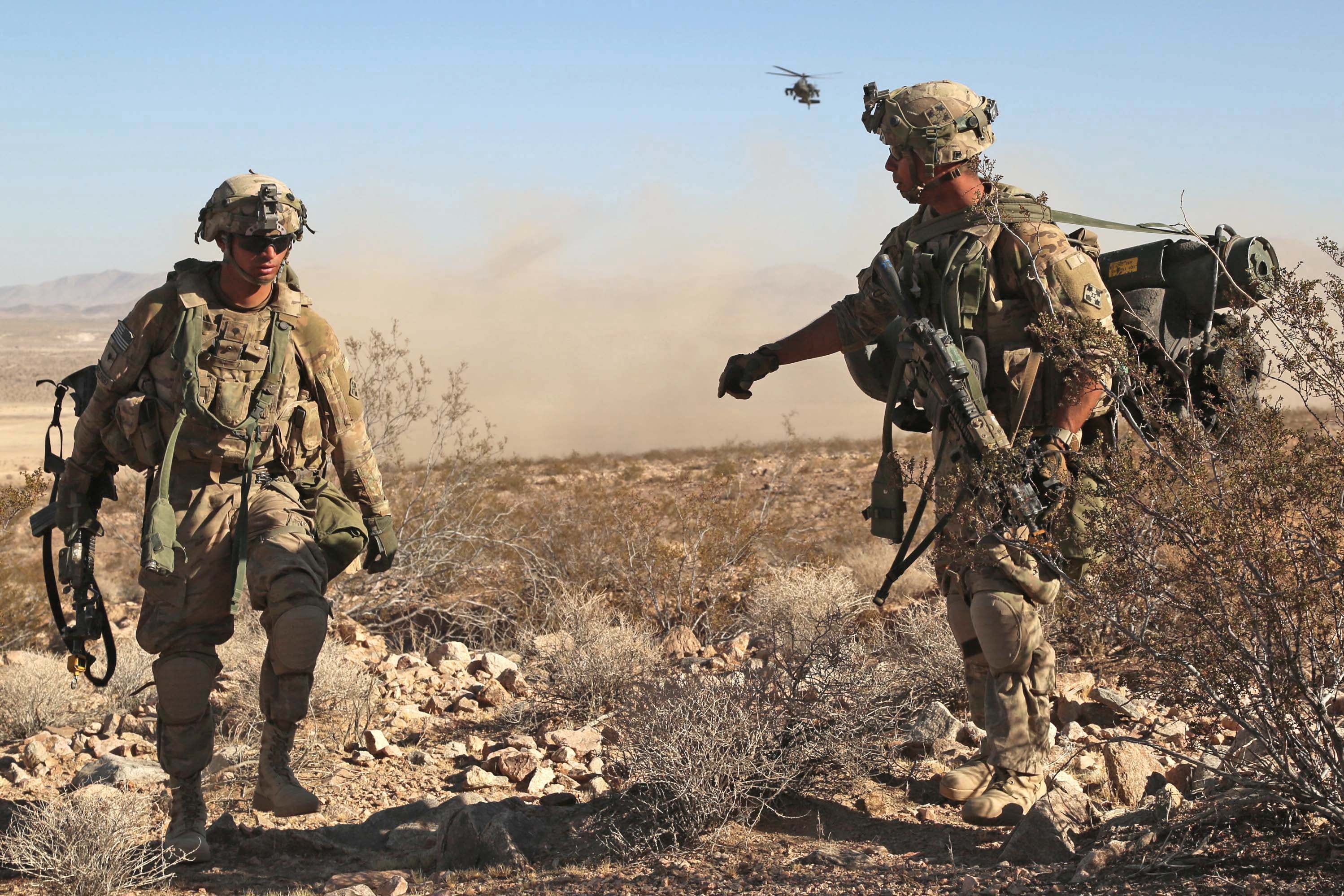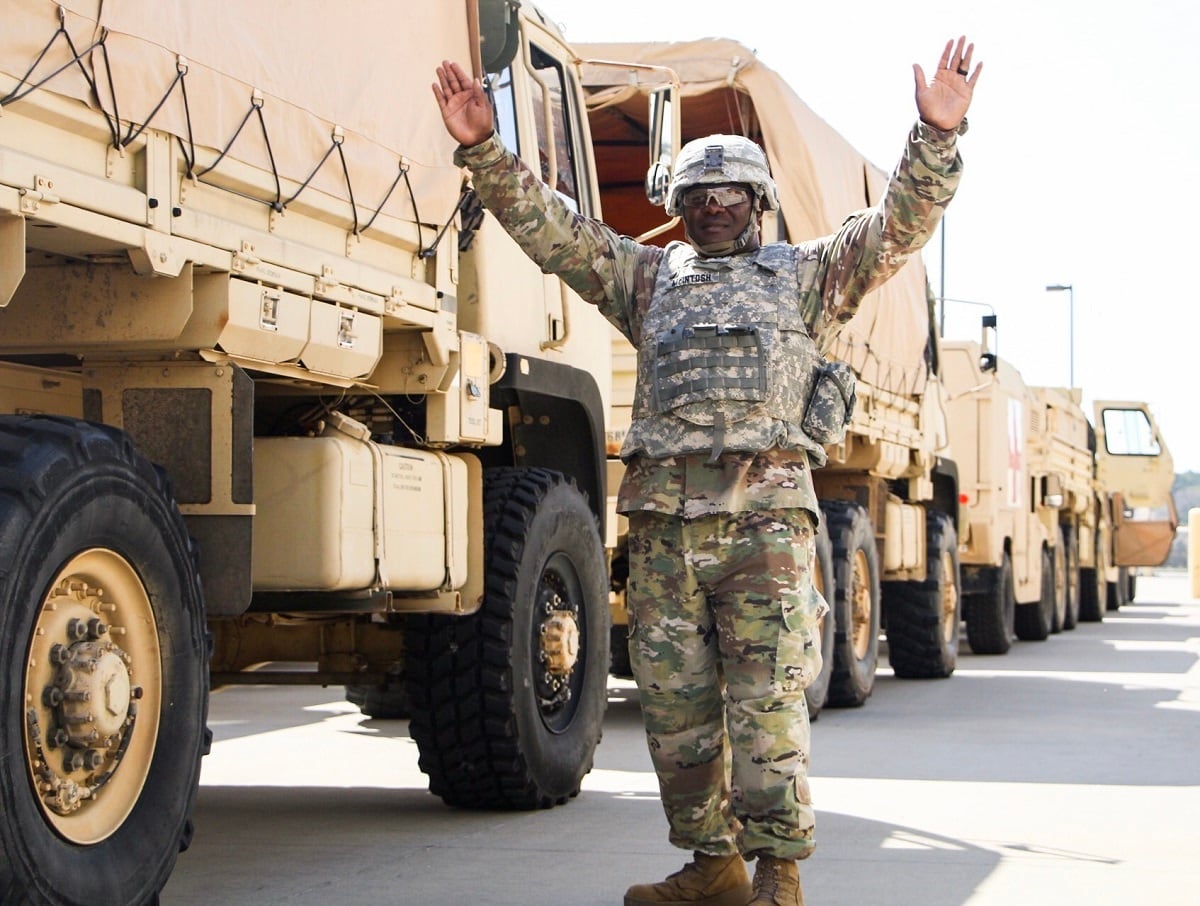Just as the Army shifts its priorities to fighting in more domains than ever before and training for major combat operations against capable rivals, so too must its logistics harden, speed up and adapt to a challenging warfighting landscape.
Lt. Gen. Aundre Piggee, the Army G-4, told an audience at the Association of the U.S. Army that the logistics side of the Army must take advantage of current and emerging technologies to deliver the right supplies to the soldier at the right time so they can be combat effective.
One way in which that will hit the formations is a goal to more than double the standalone sufficiency of individual brigade combat teams by making them self-sustaining for a week, versus the current three-day average time that the BCTs can burn through vital fuel and other essentials.
There’s a lot out there to help meet that need, Piggee said, from better supply systems and processes to utilizing artificial intelligence for coordinated efforts, additive manufacturing to build parts in the field, and drone or autonomous resupply to get items to soldiers faster and safer.
But the largest factor is an old school problem that’s plagued armies since they went mobile: fuel consumption.
To meet the seven-day sustainable BCT goal, fuel needs will have to be cut by a third.
That’s a “demand reduction” issue that reaches beyond petroleum and also to battery life, power consumption on smart grids and anywhere else that technology procedures and advancements can make the formation as lethal as long with less fuel or power consumption.
RELATED

As far as the near-peer adversary shift, Piggee sounded optimistic, saying the Army as a whole and the logistics elements have ramped up their training over the past two years.
For too long, Army sustainers got comfortable with forward operating base-type deployments. Soldiers arrive and the equipment was already there. Or it was flowing as needed. Yes, sometimes they were under attack via convoy bombings and other methods used by insurgents in Iraq and Afghanistan, but it was sustainable.
But a Multi-Domain Operations environment in which units will be cut off from major supply routes or be on the move continuously does not fit well with a steady flow FOB-type supply chain.
To that end, the logistics world has upgraded and filled critical ammo stockpiles across the globe, standardized an expeditionary “common authorized stockage list,” basically an “everything you need to go to war now” inventory, Piggee said.
And they’ve gone “back to the basics” in fundamental logistics movements, he said, for everything from increased large-scale training rotations at the National Training Center at Fort Irwin, California, to mobilizing for brigade rotations outside of the United States on short notice.

While that work has recovered some of the perishable skills of logisticians, there are more moves to be made beyond the horizon.
The longer-term work has begun as logisticians are partnering up with leadership at the newly established Army Futures Command in Austin, Texas, to get ahead on the logistics requirements for the Army’s major modernization priorities.
Those include a radically new airpower in the Future Vertical Lift, evolutionary changes to ground vehicles in the Next-Generation Combat Vehicle Program, super soldier-style outfitting and training in the Soldier Lethality Cross-Functional Team, and others.
Piggee noted that in the past, the logistical needs of new programs were sometimes not addressed until later stages. By pairing logisticians in the development process, the supplier community can better meet those program needs and the Army will have a clearer understanding of what they’ll take to be effective.
A lot of cool new tech and other industry advancements are going to help with some of the challenges of logistics, but cultural changes are needed too, Piggee said.
Logisticians “have to improve our process,” he said. “Making and delivering is as important as the product itself.”
He compared current logistics to commercial retail, where online shopping has shifted consumers from the storefront traditions of buying.
The Army could learn from that model, Piggee said, adding that he wants the gear delivered to the soldier and units to come faster, easier, cheaper and tailored to the soldier’s needs.
Todd South has written about crime, courts, government and the military for multiple publications since 2004 and was named a 2014 Pulitzer finalist for a co-written project on witness intimidation. Todd is a Marine veteran of the Iraq War.




